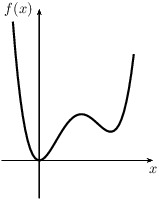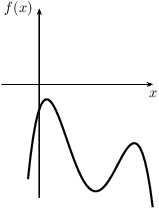Definition: Consider the function f(x) on the interval [a,b].
We can relate the notion of an integral to the area of a region below the graph of a function.
Theorem:
- The function f(x) is non-negative on the interval [a,b] if f(x)≥0 for every x∈[a,b];
- The function f(x) is non-positive on the interval [a,b] if f(x)≤0 for every x∈[a,b].
 |
 |
| non-negative function | non-positive function |
We can relate the notion of an integral to the area of a region below the graph of a function.
Theorem:
- If f(x) is a non-negative function, then the area of the region enclosed by the graph of the function f(x), the x-axis and the lines x=a and x=b, is equal to the integral of f(x) over the interval [a,b], O(f,a,b)=∫baf(x)dx;
- If f(x) is a non-positive function, then the area of the region enclosed by the graph of the function f(x), the x-axis and the lines x=a and x=b, is equal to minus the integral of f(x) over the interval [a,b], O(f,a,b)=−∫baf(x)dx.

